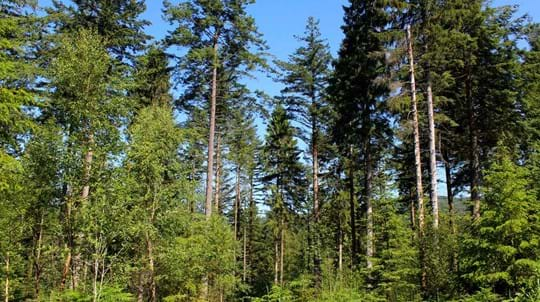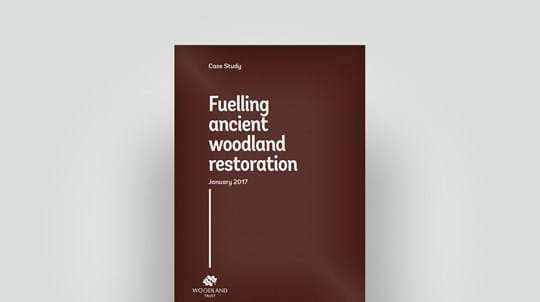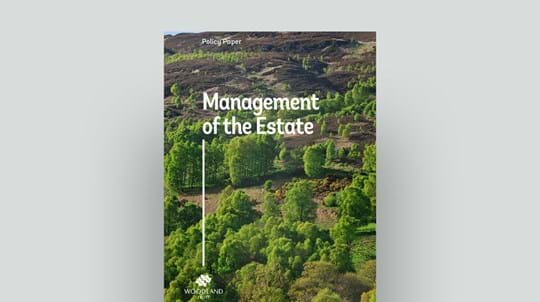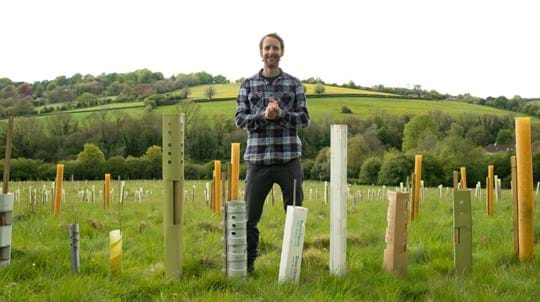
Why are trees important for biodiversity?
Woodland is home to a wealth of wildlife. If we don't protect what we have left and work to create woodlands of the future, we stand to lose more than just trees.
Discover what trees offer
Conservation evidence officer
Forests, or woodlands, currently cover approximately 13% of the UK’s total land area, around 5.5% of which is woodland consisting of native species. These native woodlands and other, non-native commercial plantations are managed by land owners for a variety of objectives, some of which may be more important to the owner than others. The key to good management is sustainability, so that the woodland ecosystem remains in good health and can provide for both people and wildlife for the long term.
The Rainforest Alliance defines sustainable forestry from an ecological perspective as “the extent to which silvicultural practices mimic nature’s patterns of disturbance and regeneration”. There are many, often conflicting, objectives to balance when managing a forest sustainably, including timber for building materials or wood fuel, and biodiversity.
The UK Woodland Assurance Standard (UKWAS) is an independent certification standard for verifying sustainable woodland management in the UK. Buying timber from a UKWAS certified supplier ensures it comes from a sustainable source. The criteria for certification includes requirements around the use of pesticides and genetically modified organisms, it insists on environmental impact assessments, and states that native species are preferred to non-natives. Restrictions are also applied to the total area that can be felled within large (over 10 hectares) semi-natural woodlands over a five-year period.
Selective removal of trees from woodland for burning as fuel can greatly benefit wildlife and is seen as a sustainable woodland management option. The carbon dioxide released by burning the felled trees will be balanced out by the CO2 absorbed by newly planted replacement trees, making this practice carbon neutral. Wildlife benefits from the temporary gaps in the canopy that are opened up by selective felling, as well as the variety of age structure in trees that this practice creates.
The composition of the woodland and the way that it is managed will determine its value for wildlife. It is possible to replicate important wildlife features in commercial forestry, such as gap size, gap creation rate and the amount of open space, which can suit the silvicultural systems of rotational clear-cutting and coppice. However, other important features such as tree species diversity and the presence of very old trees and deadwood, which provide highly-important niches for a range of species, are generally not allowed in commercial management systems. This makes well-managed native broadleaved woodlands so important for the wildlife that depends on them.

Woodland is home to a wealth of wildlife. If we don't protect what we have left and work to create woodlands of the future, we stand to lose more than just trees.
Discover what trees offerAt the Woodland Trust, our management objectives focus on maintaining or improving biodiversity and increasing people’s understanding and enjoyment of woodland. All of our sites have a management plan to ensure that the proposed management is in line with these objectives. Our woods are also managed to the UK Woodland Assurance Standard and are Forest Stewardship Council® (FSC®) certified.
A number of our ancient woodland sites have been planted with non-native trees (mainly conifers), and these woodlands require very sensitive management. These sites are in urgent need of restoration to native broadleaf trees, as the non-native conifers cast heavy shade and acidify the soil disturbing the delicate ecological balance.
We restore sites like these sensitively, gradually thinning the conifers and opening up gaps in the canopy for the understorey to begin to recover. The timber value of the conifers can be used to help fund the restoration, as at Coed y Galchog in North Wales and an ancient woodland site near Llanfair Caereinion in Mid Wales. Alternatively, the owners of Barling’s Barn in Mid Wales are financing the sensitive restoration of their ancient woodland through managing the wood for wood fuel.
Sustainably-managed forests meet the needs of wildlife while supporting livelihoods and providing many other ecosystem services, such as carbon storage and flood risk mitigation. Forests are so important for so many reasons that they should not be overexploited or poorly managed to the detriment of any of these finely-balanced interests.

Four years after the groundbreaking State of the UK's Woods and Trees report, the Woodland Trust is once again assessing the health of the UK's woods and trees – revealing the latest evidence and analysis to support the urgent action needed to protect and restore woodlands.
Read the full report
Protecting trees and woods
Discover how we restore and maximise the ecological integrity and resilience of these incredibly special places.

Case study
PDF (2.21 MB)

Case study
PDF (5.11 MB)

Policy paper
PDF (1.21 MB)

About us
Our bold pledge to stop using new single-use plastic tree guards on our land in 2021 put us at the forefront of the movement to eradicate plastic from planting schemes UK-wide. We’re funding research to find viable alternatives and are now moving towards sustainable tree protection in other areas.